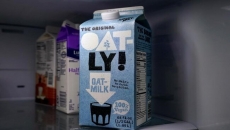Every species, including our own, has an inherent life span that serves as a kind of upper limit on the average lifespan. According to one interpretation of life span, a population of, say, flies would congregate to the maximum achievable life expectancy that is inherent to this specific species of flies if it were maintained in ideal laboratory circumstances, cared for properly, and kept generally safe. The lifespan of all flies throughout history has been the same, regardless of location or period.
This indicates that Biology offers more insightful information. There is an inherent rate of biological degradation for every species. Some species, like flies, experience this rate at a very high level and can only survive a short time; other species, like the bowhead whale, experience it at a much slower pace and can live for up to 200 years.
The average lifespan of humans is roughly 97 years. Although the theoretical limit for the human lifespan has not been exactly determined, a section of geneticists believes that it is around 150 years, while a niche of damage-repair scientists believe that there is no theoretical limit to the human lifespan if we manage to continuously eradicate repair as it is created.
This physiological limit is unaffected by increased healthcare services or global economic growth.
Why is there a set physiological limit?
It turns out that there is a limit to how frequently your cells can divide in order to keep you youthful and healthy. This restriction, known as the Hayflick limit, is determined by the physical length of telomeres, a unique cellular characteristic.
According to this notion, a normal human cell may only replicate and divide forty to sixty times until it can no longer divide and dies due to programmed cell death or apoptosis.
The Hayflick Limit hypothesis aided scientists in studying the impacts of biological aging on human populations from embryonic development to death, including the consequences of shortened repeating DNA sequences called telomeres on the ends of chromosomes.
Telomeres are the chromosomal end caps. They serve to maintain chromosomes snugly wrapped in a nice, tidy bundle, preventing fraying and binding to all the other small things within your cells. Telomeres are a useful feature, but they have a drawback: each time a chromosome is replicated to form another cell; the cellular copying apparatus must remove a little portion of these end caps.
Telomeres shorten over time until they are no longer present, at which point the cell stops dividing and may eventually die. This is what happens as we get older. Our skin, for example, stops regenerating, we gain wrinkles, and our bones become brittle and fragile. We simply deteriorate.
The simple solution appears to be to repair the telomeres such that they never shorten, thus generating an eternal spring of youth. In reality, there is an enzyme called telomerase that accomplishes precisely that. This enzyme does exist naturally in humans, but not in the most advantageous way.
But there is a huge discrepancy
Even though our cells have a limit to how many times they may divide, many of us will never reach that limit. There are several ways to die, and only a subset of them is caused by our cells approaching the end of their lives. Until approximately a century ago, infectious illnesses like TB and influenza killed most individuals well before their telomeres ran out. However, with two developments in medicine and sanitation, it is now uncommon to hear of individuals dying from these causes, and as a result, the average life has improved substantially.
People are able to endure illnesses and infections because of improved health systems.
The compensation effect of mortality
The "compensation effect of mortality" refers to the relationship between lower mortality at younger ages and faster mortality increases as we approach the physiological limit. This is also related to a "compression of morbidity," which refers to the fact that we are now generally healthier at all ages.
For instance, compared to 1900-1924, Italian males' survival rates significantly increased between 1975 and 1999. As a result, the 80-year-old today, while substantially healthier than an 80-year-old 100 years ago, has a far greater rate of body disintegration in his or her later years.No matter how healthy we were when we were younger, the human species reaches its end of life between the ages of 90 and 95.
Overall advancements in healthcare systems make us all considerably healthier as children; but, the compensatory impact of mortality assures that the better we are, the faster we will age in the end. Nature has endowed our species with an inherent rate of biological disintegration that will allow just a handful of us to survive above the age of 97.
Conclusion:
So, biology says that the maximum human life expectancy is somewhere around 97 years, but there is a twist: Humans seem to be unusual. If the notion of constant life span were accurate for humans, we would witness a slowing of growth in more developed nations and a convergence across all areas; yet, life expectancy continues to rise. More crucially, the survey shows that 100 years ago, the survival chance of Italian males to live another year was almost zero at roughly age 89; nevertheless, according to the theory of lifespan, it should have been nearly zero only at age 97, as it is now.
However, we typically do not reach the theoretical limit of how long we can live because we die prematurely of other diseases caused by damages caused by less-than-optimal life choices. People are now more likely to die prematurely from diseases such as cancer and heart disease.
While some of these early deaths are simply the result of bad luck or poor genetics, many are avoidable via good lifestyle choices. Most of us will live to a ripe old age if we do things like quit smoking, put down fried food, and use sunscreen.
In reality, in industrialized nations, life expectancy and life span are currently moving in tandem, whereas before 1970, life expectancy was converging to a fixed life span of roughly 89, as anticipated by theory. We discovered a means to slow down the natural process of body deterioration, a truly astounding advance that no other species has accomplished. And who knows what else we could stumble along the journey? Perhaps one day we'll be able to safely harness the power of telomerase and never age. In other words, we could create our own lifespan!
Photo courtesy of IStock.






